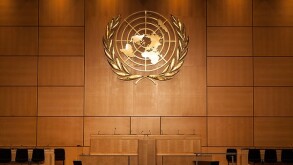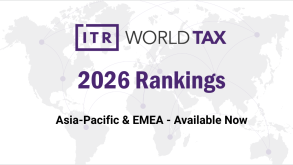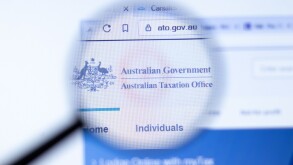In our article in last year's International Tax Review – Mergers & Acquisitions, we examined the leveraged take-over rules that were introduced in Dutch tax legislation and became effective on January 1 2012.
In that article we highlighted the intention of the Dutch secretary of state to publish legislative proposals during 2012 to close the Bosal-gap and his intention to reconsider the necessity of the existing restrictions on interest deductibility (including the leveraged take-over rules) in light of any new legislation. We expressed our hope that the legislator would use the introduction of any new legislation as an opportunity for a thorough overhaul of the tax treatment of interest on (acquisition) debt and create a less patchy system.
Almost one year later the Dutch Secretary of State unfortunately fulfilled only half of his intentions. He did publish legislative proposals to close the Bosal-gap. However, he did not seize the introduction of the new rules as an opportunity for a thorough overhaul of the tax treatment of interest.
This article will briefly outline the new legislation and the measures taken by the tax legislator to streamline the various interest denial rules the Netherlands now has in place. Furthermore, we will discuss two recent developments that affect the ability of holding companies to recover VAT on deal costs. In light of the rising VAT rates and the focus on the recoverability of VAT on acquisition costs, this is an increasingly important topic.
The new Bosal legislation
Before January 1 2004, (interest) expenses relating to qualifying participations were as a general rule not deductible from Dutch taxable profits. The main reason for such expenses not being tax deductible was that proceeds from such a participation (both income and capital gains) were not taxable. However, the Dutch legislature made one very important exception to this general rule of non-deductibility. To the extent the expenses were (indirectly) instrumental in generating profits that were taxable in the Netherlands, the expenses would be deductible. Consequently, expenses related to a Dutch participation were deductible while the same sort of expenses incurred in respect of (for example) a Belgian participation were not. The European Court of Justice (ECJ) decided in 2003 in the (in)famous Bosal case that such a distinction was not allowed since it constituted an infringement of the freedom of establishment.
In reaction to this ECJ decision and the potentially significant impact on the tax revenues, various rules have been introduced and withdrawn over time. The central theme of these rules is to limit perceived misuse of interest deductions. All of this has resulted in the patchwork that governs the deductibility of interest for corporations.
As part of the tax budget proposals for the fiscal year 2013 the legislator proposed a new specific provision that potentially limits the deduction of interest with respect to debt used to finance assets generating income that is exempt under the Dutch participation exemption (article 13L Corporate Income Tax Act). In the same tax budget, the abolition of the existing thin capitalisation rules was proposed.
The new rule in a nutshell
Article 13L CITA aims to restrict the deduction of interest expenses relating to assets that generate income that is exempt under the Dutch participation exemption regime. The restriction only applies to the extent the Dutch taxpayers' amount of participation debt is deemed excessive and/or in situations deemed to be abusive in the view of the legislator. The new rules apply both to related party debt and debt taken up from third parties.
The calculation rule
At the heart of the new legislation is a mechanical calculation rule that is used to determine whether the taxpayer has participation debt. To the extent the historic cost price of participations held by the taxpayer exceeds its own equity, for tax purposes, the participations are deemed to have been financed with debt; this amount is referred to as the 'participation debt'. So based on the calculation rule, the equity of a taxpayer is deemed to have been used to finance participations held by the taxpayer.
Calculation rule:
Participation debt = historic cost price participations - equity The amount of participation debt can never exceed (i) the total amount of debts or (ii) the total amount of historic cost price of the subsidiaries.
The historic cost price of the participations consists of the initial consideration upon acquisition plus acquisition costs. Subsequent capital contributions (both formal and informal) increase the historic cost price, while repayments of capital lower it, as would dividends that were paid from pre-acquisition earnings. Should the taxpayer not value its participations on its fiscal balance sheet in accordance with historic cost price, it needs to make a correction to its equity as if it did.
The amount of participation debt is used to determine the amount of excessive participation interest expenses. This is a pro rata calculation:
Excessive participation interest expenses:
(Participation debt ÷ total amount of debt) × total interest expenses
The participation debt and total debt are to be determined on an average basis so temporary mutations around the end of the financial year (to improve the averages) are ignored.
Finally, a threshold of €750,000 ($976,000) of excessive interest expenses has been introduced to spare small and medium-sized corporate taxpayers.
A simplified example to illustrate the mechanics:
Please refer to the below balance sheet. The balance sheet at December 31 is unchanged from that of January 1. 
The book value of the participations equals the historic cost price. Participation debt= historic cost price participations (200) minus equity (40) Participation debt = 160 Excessive participation interest expense: (Participation debt (160) ÷ total amount of debt (21 0) × total interest expense (10.5) Excessive participation interest expense: 8 Non deductible interest expenses: €8M minus threshold of €750k = €7250k |
Because of the introduction of the calculation rule, a historical link between the financing and the acquisition of a participation is (apart from financing that can be linked to certain treasury activities) not of relevance. The new rules simply do not look at whether the leverage has in fact been used to finance participations or for other purposes. This could mean that if a Dutch taxpayer that is fully financed with equity and that holds participations subsequently takes up a loan to acquire, for example, real estate, it could be faced with non-deductible interest based on the new rules. The legislator acknowledged this, but indicated that he prefers to apply a simple rule.
Expansion of operational activities
Article 13L CITA contains numerous exceptions to the abovementioned general rule of non-deductibility. It goes beyond the scope of this article to address these exceptions in detail. We will therefore focus on the most important exception for the Dutch M&A market, the so-called 'expansion investment' exemption, which was introduced in order not to harm the Dutch investment climate too much.
Without any exception, article 13L would in principle catch all subsidiaries that qualify for the participation exemption, whether acquired for legitimate business reasons or as part of a debt creation structure. It is not the intention of the rule to harm legitimate investments. The legislator therefore determined that article 13L does not restrict deductibility of interest expenses on loans taken up to finance an expansion of operational activities of the group. This is achieved by not including in the calculation rule that part of the historic cost price of participations that were acquired and resulted in an expansion of operational activities. Whether or not operational activities are expanded is determined from a group perspective. This exception also applies if the participation is transferred to the Dutch taxpayer within 12 months after the acquisition by the group as a whole. This 12-month period is according to the secretary of state sufficient to integrate the newly acquired group in the acquiring group of companies. If the 12-month period is exceeded, the Dutch taxpayer could potentially rely on a simultaneously issued decree that facilitates internal reorganisations (see below).
Operational activities are not defined in the law. However, in parliamentary history, examples such as production, distribution and sales activities are given. Furthermore, it is explicitly mentioned that diversification of existing activities is also considered an expansion of operational activities. The expansion investment exemption, however, does not apply in certain situations deemed abusive by the Dutch tax legislator. This primarily relates to situations where the interest on the debt is also deducted elsewhere in the group (double dip), where the funds are rerouted to obtain a tax benefit for the group, or situations where it is not probable that the expansion investment would have been made if the interest deduction would not be obtained (main purpose).
In practice corporate groups acquiring other active corporate groups or entities through their Dutch structure should generally be able to invoke the expansion investment exemption, thereby not creating non-deductible interest under this rule.
In addition a limited grandfathering rule has been introduced. Under this rule, taxpayers may elect to disregard 90% of the acquisition price, with respect to all acquisitions made in taxable years that commenced on or before January 1 2006, assuming the anti-abuse exceptions do not apply.
Decree clarifying the new rules in reorganisations
Accompanying the new legislation, the Dutch State Secretary of Finance released a Decree to clarify the new interest deduction limitation provision. The Decree outlines the application of participation debt rules in three situations: (i) internal reorganisations (asset and share transfers) that qualify as good acquisitions, (ii) determination of the cost price when forming or dissolving a fiscal unity and (iii) where double counting could occur under this rule and another interest limitation rules (such as the leveraged take over holding rules of article 15AD CITA).
With article 13L there is yet another change in interest denial rules in the Netherlands in a short period of time. Instead of the comprehensive overhaul that was announced, the Dutch tax legislator merely introduced the participation interest denial rule and simultaneously abolished Dutch thin capitalisation rules effective January 1 2013. He indicated that the Dutch system of interest denial rules after introduction of 13L and abolishment of thin capitalisation rules is now final and that there will finally be stability.
Until further notice the deduction of interest for Dutch companies can be limited based on the following set of rules:
Related party debt rules (article 10A CITA)
Fiscal unity leveraged acquisition rules (article 15AD CITA)
Participation debt rules (article 13L CITA)
Hybrid debt rules (articles 10B and 10-1-d CITA)
What about the VAT?
VAT is often perceived as an absolute deal cost as the rules governing VAT recovery on deals are very complex. However, as VAT rates in the EU are rising, the current economic situation makes it more important to carefully consider the VAT aspects of transactions and whether the burden of VAT on deal costs can be reduced.
The Netherlands is a country that is often used for setting up holding companies. As a result increasing interest is paid to the VAT position of holding companies and the VAT treatment of these holding companies. Two recent developments have affected the ability of holding companies to recover VAT on transaction and other costs in the Netherlands.
Limitation of the input VAT recovery: Non-economic activities
On March 13 2008, the ECJ issued a landmark judgment in the Securenta case dealing with the recovery of VAT on costs partly related to non-economic activities. In summary, the ECJ held that to the extent that the costs incurred relate to non-economic activities, the VAT on those costs is not recoverable. Where the costs incurred relate to both economic and non-economic activities, it is for the member states to establish appropriate methods and criteria to determine to what extent the VAT on such costs is recoverable. Those methods must objectively reflect the part of the costs attributable to the economic and non-economic activities, respectively. The ECJ held that member states may, for example, apply an investment formula (for example apportionment based on the investments for the economic and non-economic activities, respectively) or a transaction formula (for example apportionment based on turnover). Furthermore, the court defined the pure holding of shares as a non-economic activity.
Like many other member states, the Netherlands had not established methods for the apportionment of VAT on costs incurred for both economic and non-economic activities. Therefore, there was no legal basis for determining the appropriate method, and it was still argued that where a holding company had at least some economic activities, the VAT on deal costs in relation to a subsidiary to which it provided no services should be fully recoverable.
That is, until a new Decree was issued in November 2011. Based on this Decree, such a method for apportionment shall be established on a case-by-case basis and shall be based on objective factors such as (i) the ratio of the turnover from economic activities and turnover from non-economic activities, (ii) the use of square feet or (iii) investments or costs. However, this is not an exhaustive list; other methods may be applicable provided that they reflect the actual use of goods and services for the economic and non-economic activities.
The methods mentioned may not be appropriate when determining the VAT recovery right of holding companies. For example, it is questionable whether an apportionment based on turnover can reflect an objective apportionment when for certain non-economic activities no remuneration is received. And how can a cost-based method reflect an objective apportionment when the non-economic activities are constituted by an acquisition or sale of a large portfolio of shares and substantial deal costs are incurred? Alternatively and where appropriate, it may be more accurate to allocate the costs incurred to the economic and non-economic activities in line with the income tax treatment.
Stand-alone (that is, non-VAT-grouped) holding companies that incur substantial deal costs that cannot be attributed to an economic activity are now limited in their VAT recovery. However, since the new Decree introduces a non-exhaustive list of methods of apportionment, it is worthwhile to consider alternative methods of apportionment which may give a more appropriate allocation of the costs incurred, thereby increasing the level of VAT that may be recoverable.
We note that it becomes complicated when the holding company holds the shares in a subsidiary with which it forms a VAT group and acquires another subsidiary that cannot become part of the VAT group and towards which it performs no activities at all (with or without a remuneration). In that case, one may argue that the VAT recovery position of the holding is judged on the basis of the VAT recovery position of the VAT group. However, taking into account that the VAT group performs non-economic activities towards the newly acquired subsidiary, the recovery of VAT on transactions cost would be limited.
VAT grouping
Businesses established in the Netherlands and which have sufficient financial, economic and organisational links are deemed to be one single taxable person for VAT purposes, that is a VAT group.
One of the conditions to form a VAT group is that all group members qualify as a taxable person for VAT purposes, that is perform economic activities. This basically means that Dutch-established pure holding companies that merely hold shares in their (Dutch) subsidiaries cannot be part of a VAT group, as they do not perform economic activities.
However, based on a still-valid Decree from 1991, a holding company that performs a policy-setting and management role without charging management fees, thus not qualifying as a stand-alone taxable person for VAT, may nevertheless become part of a VAT group. As a consequence, VAT incurred on costs by such a holding company is recoverable to the extent the VAT group as a whole has the right to recover VAT. It is critical to ensure such a VAT group is already established at the time of the initial transaction to increase the potential recovery of VAT on transaction costs.
This facility is now under challenge by the European Commission as it has started combined infringement procedures against the Netherlands and other EU states. The Netherlands is, however, defending the position that such holding companies should be allowed to be part of a VAT group.
The Netherlands argues that one should look at the economic reality. An active holding company exercises its activities within the framework of a business objective and with a commercial purpose. One should therefore look beyond the mere acquisition or holding of shares and rather to the overall downstream business. Accordingly, the simplest way of implementing the VAT deduction applicable to the downstream results of the investments and acquisitions of the top holding is to include it in a VAT group with its subsidiaries.
In view of the recent Decree on VAT recovery for non-economic activities, the above reasoning seems also to imply that active management without consideration should be regarded an economic activity. Accordingly, based on this reasoning, holding companies with foreign subsidiaries, or other subsidiaries that fall outside a VAT group, should be eligible for VAT recovery if they perform management activities towards these subsidiaries without remuneration. This increases the possibility of recovering VAT on transaction costs significantly.
In his opinion in the combined infringement cases, the advocate general has concluded that active holding companies should not be precluded from becoming part of a VAT group. It is now up to the ECJ to decide. Should the court follow the opinion of the Advocate General, it will then be interesting to see whether it takes the next step and confirms the economic status of management without a fee, thus easing the VAT burden for active holding companies.
The views reflected in this article are the views of the authors and do not necessarily reflect the views of the global Ernst & Young organisation or its member firms.
Hans Grimbergen |
||

|
|
Partner, transaction tax Ernst & Young Belastingadviseurs Tel: +31 88 407 8498; +31 6 2125 2821 Fax: +31 10 406 8683 Email: hans.grimbergen@nl.ey.com With more than 20 years' experience in tax, Hans Grimbergen is a partner in the Dutch tax firm focusing on mergers and acquisitions, restructuring and international tax. He holds master's degrees in business economics and fiscal economics from Erasmus University Rotterdam. Before joining Ernst & Young, he held a senior position in the Dutch Revenue, where his responsibilities included the taxation of multinational companies, advance rulings and litigation. Since joining Ernst & Young in 1995, he has worked in international tax both in and outside the Netherlands. He has worked on the Dutch tax desk in New York and has headed the Dutch tax desk in London. |
Ivo Middelink |
||

|
|
Senior manager, transaction tax Ernst & Young Belastingadviseurs Tel: +31 88 407 8497; +31 6 2125 2236 Fax: +31 10 406 8683 Email: ivo.middelink@nl.ey.com Ivo Middelink is a senior manager within the Ernst & Young transaction tax practice in Rotterdam, the Netherlands, advising on tax aspects of mergers and acquisitions, restructuring and international tax. He has close to 10 years of relevant transaction experience and has been involved in many (cross-border) due diligence projects for both private equity as corporate clients, both on the buy side and the sell side, (inter)national acquisition structuring and post-deal restructuring/reorganisations. |









